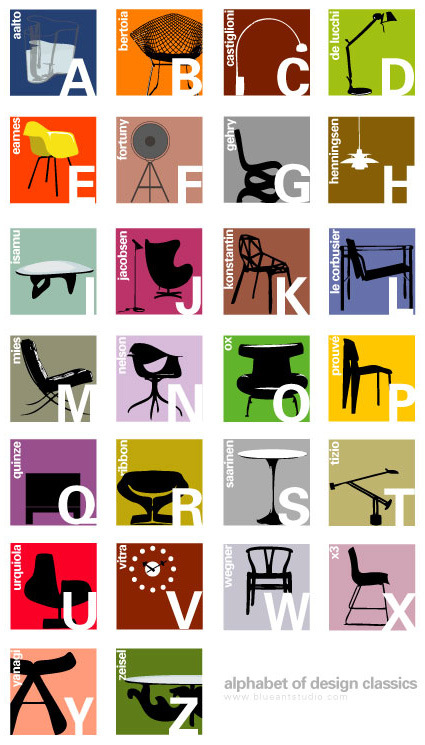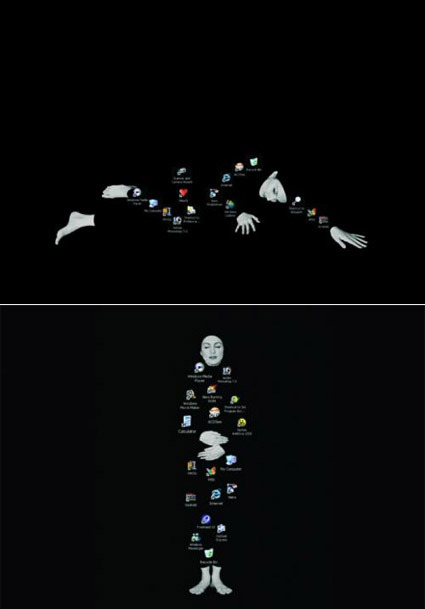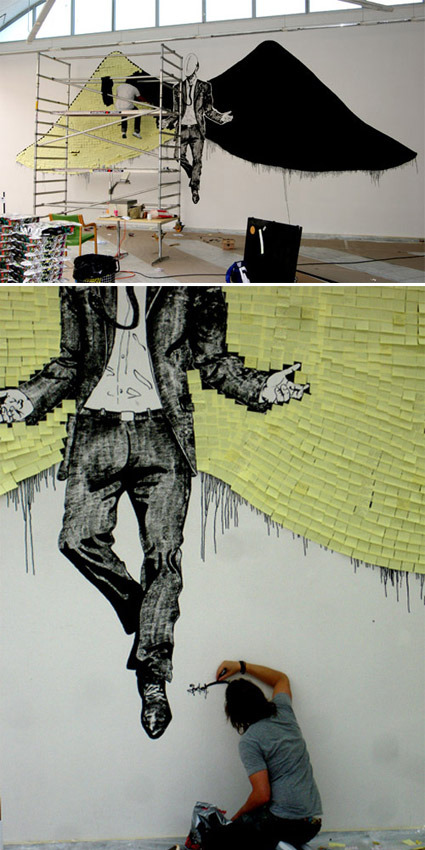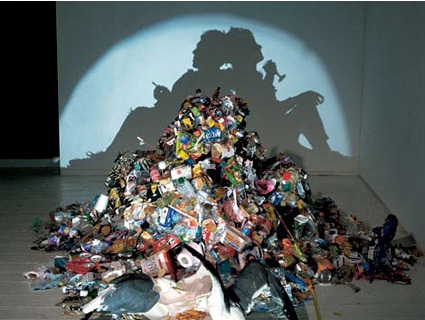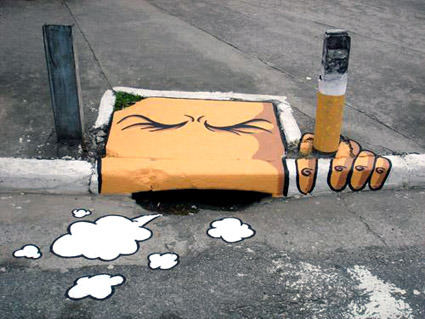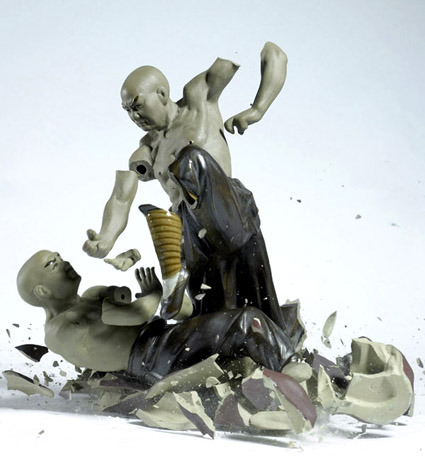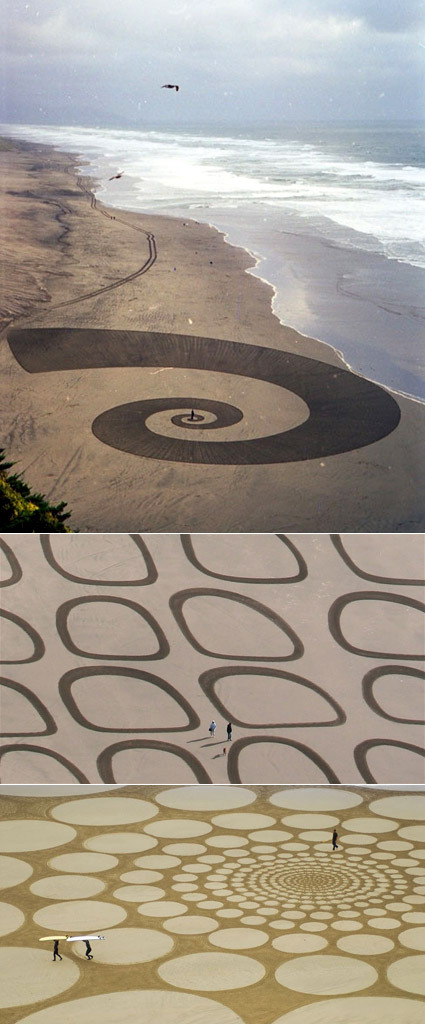
Sure, we have seen a fair share of crop-circle art before – here’s something equally amazing, but done on sand instead of crops:
Jim Denevan makes freehand drawings in sand. At low tide on wide beaches Jim searches the shore for a wave tossed stick. After finding a good stick and composing himself in the near and far environment Jim draws– laboring up to 7 hours and walking as many as 30 miles. The resulting sand drawing is made entirely freehand w/ no measuring aids whatsoever. From the ground these environments are seen as places. Places to explore and be, and to see relation and distance. For a time these tangible specific places exist in the indeterminate environment of ocean shore. From high above the marks are seen as isolated phenomena, much like clouds, rivers or buildings. Soon after Jim’s motions and marks are completed water moves over and through, leaving nothing.
Pretty cool (it’s a pity these art pieces are all temporary though), eh? Tonnes more, and some processes on the artist’s website.



